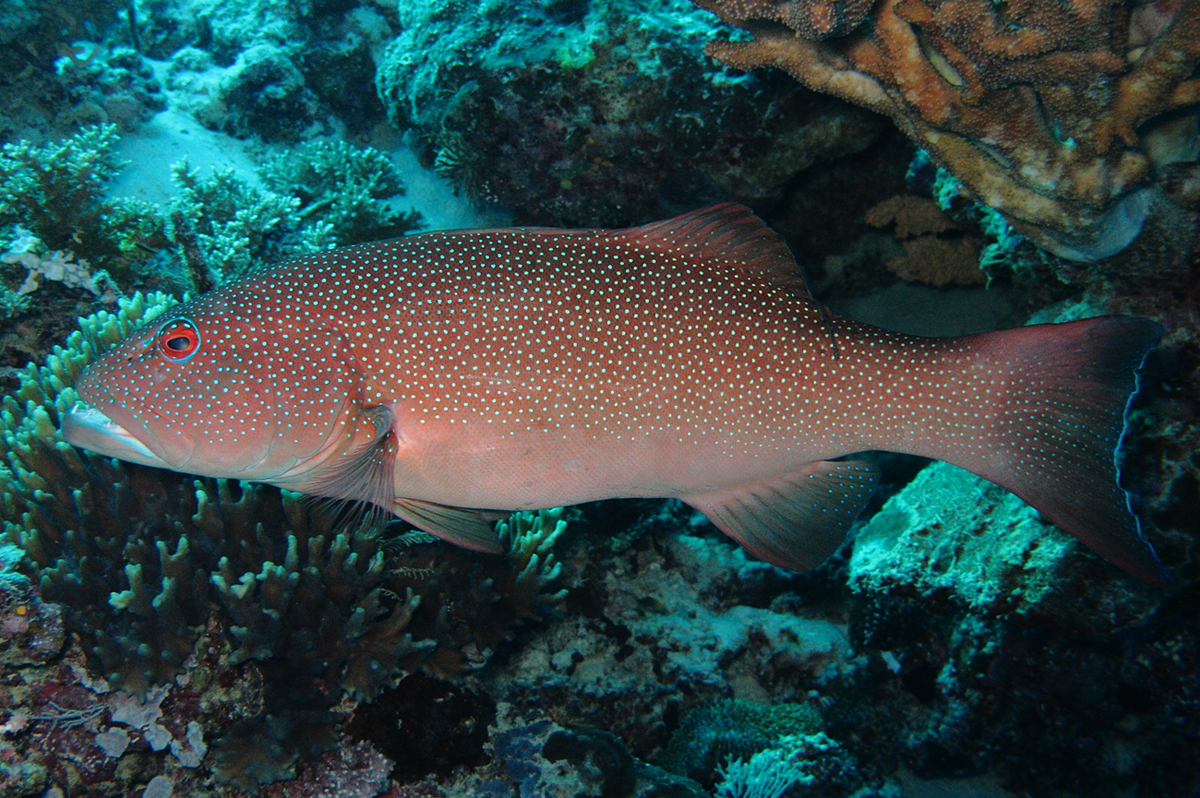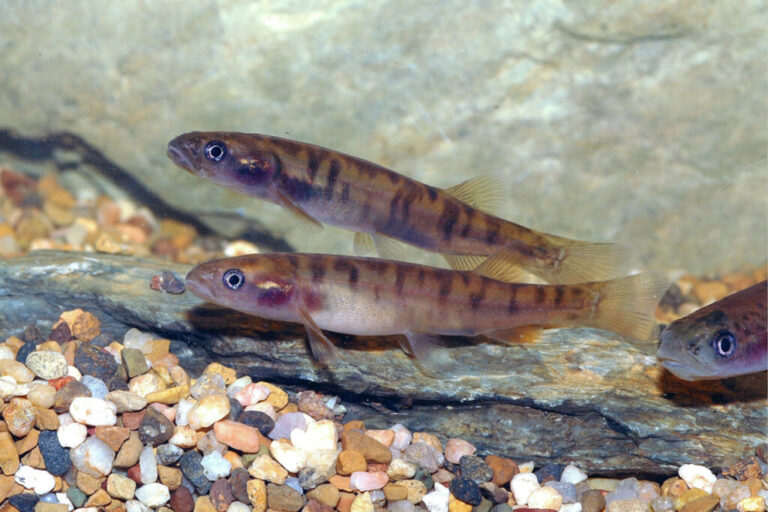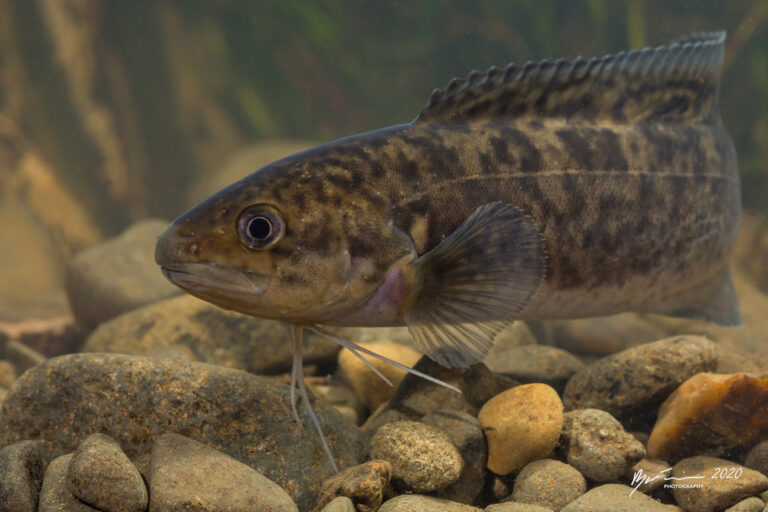
The common coral trout (Plectropomus leopardus), is more correctly known as the leopard coral grouper, also leopard coral trout, blue-dotted coral grouper or spotted coral grouper. In Australia it is found at Beacon Island in Western Australia, the Ashmore and Cartier Islands in the Timor Sea, around the tropical north coast as far south as Sydney.
The common Coral Trout are bright scarlet and the head and body are abundantly speckled with small bright electric blue circular spots. There is a blue ring around the eye, this may be broken up. The juvenile trout tend to be the prettier fish, with bright red/orange colours and blue spots all over whereas the larger fish start to lose their brightness and take on a more green/brown colour. Although the blue spots remain, they may be muted and not as vivid as on the juvenile. The lower jaw projects slightly with multiple rows of sharp teeth in the upper and lower jaw. This species attains a total length of 120 centimetres and a maximum published weight of 23.6 kilograms although they are commonly around 30-70 centimetres and 500g-4kg.
Coral trout are voracious predators and even their own young are fair game. They feed during daylight, mostly at dusk and dawn, and use two main hunting methods: by remaining quite still near the bottom or hiding on the reef and ambushing unwary passing fish, or by cruising slowly along higher in the water column and then attacking in a flash.
They have also been seen chasing schools of small fast fish, such as anchovy and herring.
Although often associated with waters ranging from 10-30 meters, they are not uncommon in shallow water and can be caught in very shallow water provided there are some breaks between the reef with a depth of about a metre or so. These shallower fish are usually on inshore reefs and they tend to congregate on isolated bommies surrounded by sand. It is these shallower fish that interest the fly fisherman.
Fish in less than 2m of water with an 8wt floating or sink tip line and use a sinking line for water over this depth. Fancy leaders are not required. A straight leader of at least 30lb fluorocarbon and 6-8 foot long is all that is needed.
Barramundi-style flies are suitable but an old fashioned clouser is hard to beat. In shallower water trout will strike at a popper.
Coral trout, like most predators, love to face into the current and by fishing your presentation into areas where the current is pushing onto a bommie or ledge is vitally important. Fish behind this and you are wasting your time. The deeper the water, the more time you have to allow the fly to sink closer to the bottom.
These fish are renowned for putting all their effort into the initial strike and trying to get back to the reef once hooked. Keep their head pointed in your direction long enough to get them clear of the reef. If you give the trout an inch in the first few seconds of the fight – he’ll win. Don’t be tempted to cast the fly to the horizon, the further you hook these fish from you, be it on a boat, on a rock platform or wading , the better the chance they have to regain their patch of reef.
Coral trout are not a sociable species; when you catch one or two on a single bommie you are advised to move to the next section of the reef.




